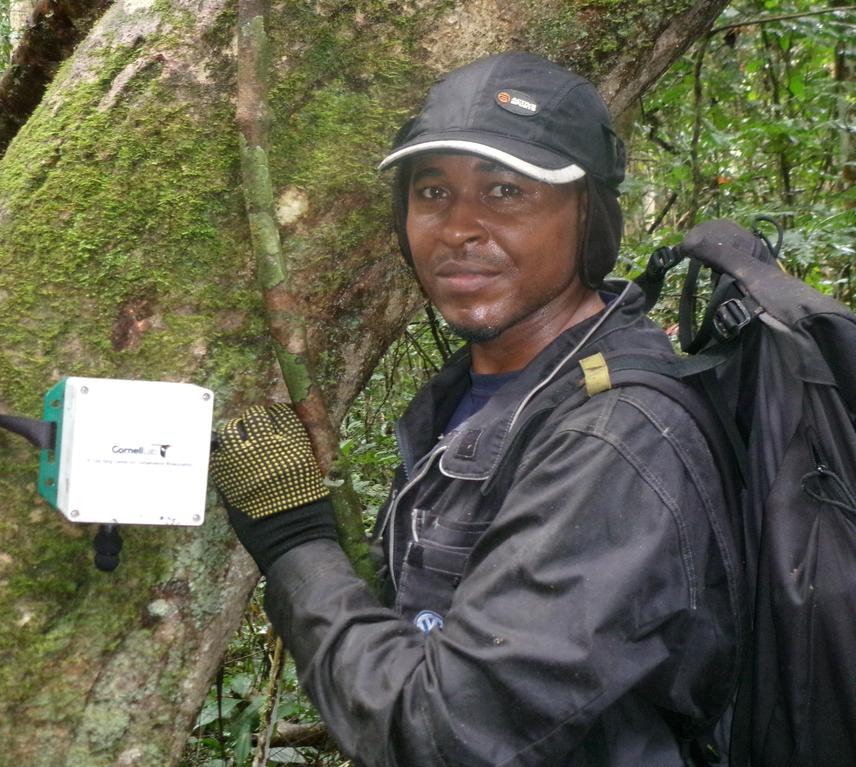Alain Simeu Noutchom
Other projects
17 Jan 2024
Distribution, Bioecology, and Threats of Katydid Species in Mpem & Djim National Park, Cameroon
Orthoptera, including katydids, crickets, and grasshoppers, play essential ecological roles in tropical ecosystems, contributing to nutrient cycling, pollination, and serving as prey for higher trophic levels. They are highly sensitive to environmental changes, making them effective bioindicators. However, traditional biodiversity surveys often overlook these insects, particularly cryptic or nocturnal species, due to detection challenges. Passive Acoustic Monitoring (PAM) offers an innovative solution by using species-specific calls to identify and monitor Orthoptera over time. Applying this approach in ecologically significant areas such as Mpem & Djim National Park (MDNP) is particularly urgent, as the park harbours rich biodiversity but faces growing human-induced pressures that threaten Orthoptera and their habitats.

Attaching the SwiftOne Device for Acoustic Monitoring of Orthoptera Species in Mpem & Djim National Park. © Alain Simeu-Noutchom.
MDNP, located in Cameroon’s Centre Region, spans about 97,000 hectares and forms a forest–savannah ecotone. It is a key biodiversity area but faces increasing anthropogenic pressures such as deforestation, farming, hunting, settlement expansion, and logging. These threats degrade habitats, disrupt acoustic communication vital for Orthoptera reproduction, and contribute to population declines. Despite the park’s ecological importance, invertebrates like Orthoptera have historically been neglected in conservation efforts due to the absence of baseline data.
The proposed project applies PAM to fill these gaps by recording Orthoptera calls across seasons and habitats using autonomous recording units (SwifOne). Collected data will be analysed to assess species richness, abundance, distribution, and habitat associations. Outputs will include biodiversity hotspot maps, acoustic libraries, and conservation recommendations specific to MDNP’s challenges. These data will also be shared with international platforms, contributing to updates of global and national conservation assessments.
Beyond scientific outputs, the project emphasises local engagement. By involving ecoguards, guides, and communities, it will provide training, employment, and awareness-building opportunities. This participatory approach aims to strengthen environmental stewardship, promote sustainable resource use, and ensure the long-term integration of insect monitoring into national park management. In line with these activities, the project is structured around clear aims that guide both its scientific and community-focused outcomes:
1. Improve knowledge of Orthoptera diversity and distribution in MDNP.
2. Identify and document key anthropogenic threats to Orthoptera habitats.
3. Develop acoustic libraries for long-term biodiversity assessment.
4. Strengthen local capacity through community involvement in PAM.